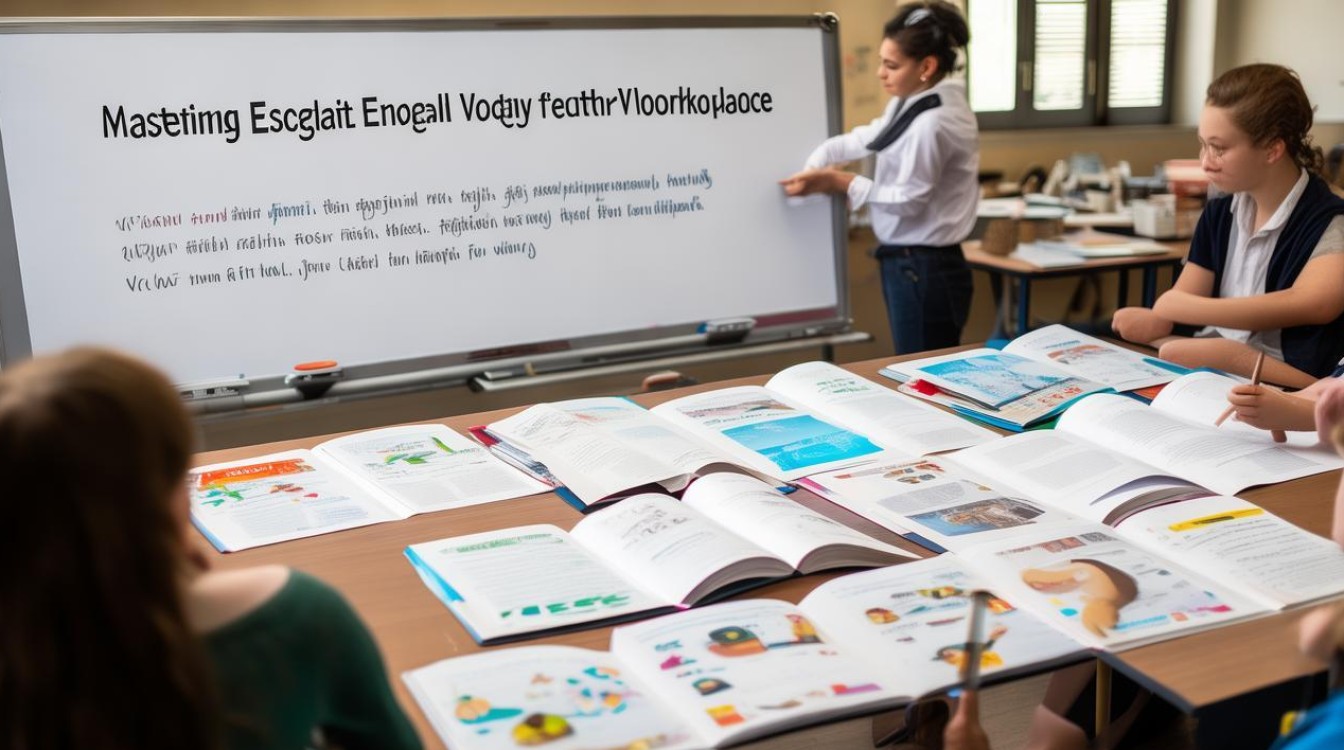In today’s globalized professional landscape, a strong command of workplace-related English vocabulary is crucial. Whether communicating with international colleagues, writing reports, or attending meetings, the right words can enhance clarity and professionalism. Below is a curated list of essential terms across different workplace scenarios.

Core Business Terminology
-
Deadline – The final date by which a task must be completed.
- Example: The project deadline is Friday at 5 PM.
-
KPI (Key Performance Indicator) – A measurable value showing how effectively a company or employee achieves objectives.
- Example: Sales growth is a critical KPI for our team.
-
Stakeholder – Anyone with an interest in a project or business decision.
- Example: We need stakeholder approval before proceeding.
-
Synergy – The combined effort of a team producing better results than individual work.
- Example: The marketing and sales teams created great synergy.
-
ROI (Return on Investment) – A measure of profitability relative to costs.
- Example: This campaign’s ROI exceeded expectations.
Job Titles & Departments
Understanding common job titles helps in professional communication:
- CEO (Chief Executive Officer) – The highest-ranking executive.
- Manager – Oversees a team or department.
- HR (Human Resources) – Handles recruitment, payroll, and employee relations.
- IT (Information Technology) – Manages technical systems and support.
- Finance – Deals with budgeting, accounting, and investments.
Email & Communication Terms
Effective workplace communication relies on precise language:
-
Follow-up – Checking in after an initial contact.
- Example: I’ll send a follow-up email tomorrow.
-
CC (Carbon Copy) – Including additional recipients in an email.
- Example: Please CC the manager on your reply.
-
ASAP (As Soon As Possible) – A request for urgent action.
- Example: We need the report ASAP.
-
FYI (For Your Information) – Sharing information without requiring action.
- Example: FYI, the meeting has been rescheduled.
-
Action Item – A specific task assigned during a meeting.
- Example: Your action item is to finalize the budget.
Meeting & Presentation Vocabulary
Meetings require structured communication:

-
Agenda – A list of topics to discuss.
- Example: The meeting agenda includes budget reviews.
-
Minutes – Official notes from a meeting.
- Example: The secretary will distribute the minutes.
-
Brainstorming – Generating creative ideas as a group.
- Example: Let’s brainstorm solutions for this issue.
-
Consensus – General agreement among participants.
- Example: We reached a consensus on the new policy.
-
Q&A (Question and Answer) – A session for queries after a presentation.
- Example: There will be a 10-minute Q&A at the end.
Project Management Terms
Efficient project execution depends on these terms:
-
Milestone – A significant point in a project timeline.
- Example: Completing Phase 1 is our next milestone.
-
Scope – The defined boundaries of a project.
- Example: The scope includes design and testing.
-
Deliverable – A tangible outcome of a project.
- Example: The final deliverable is a detailed report.
-
Risk Assessment – Evaluating potential challenges.
- Example: We conducted a thorough risk assessment.
-
Workflow – The sequence of tasks in a process.
- Example: Optimizing workflow improves efficiency.
Negotiation & Contracts
Business agreements rely on precise language:
-
Terms & Conditions – Rules governing an agreement.

- Example: Review the terms before signing.
-
Non-Disclosure Agreement (NDA) – A contract protecting confidential information.
- Example: All employees must sign an NDA.
-
Counteroffer – A revised proposal in response to an initial offer.
- Example: The client made a counteroffer on pricing.
-
Breach of Contract – Violating agreed terms.
- Example: Failure to deliver is a breach of contract.
-
Arbitration – Resolving disputes outside court.
- Example: The disagreement went to arbitration.
Remote Work & Digital Collaboration
With hybrid work environments, these terms are vital:
-
Telecommuting – Working remotely, often from home.
- Example: Our policy allows two days of telecommuting.
-
Cloud Storage – Online data storage services.
- Example: All files are saved in cloud storage.
-
VPN (Virtual Private Network) – Secures internet connections.
- Example: Employees must use a VPN for remote access.
-
Stand-Up Meeting – A brief daily check-in.
- Example: The team has a 15-minute stand-up meeting.
-
Asynchronous Communication – Exchanging messages without real-time interaction.
- Example: We rely on asynchronous communication across time zones.
Financial & Budgeting Terms
Financial literacy is key in business discussions:
-
Invoice – A bill requesting payment.
- Example: The vendor sent an invoice for services.
-
Overhead – Ongoing business expenses.

- Example: Reducing overhead improves profitability.
-
Break-Even Point – When revenue equals costs.
- Example: We expect to reach the break-even point soon.
-
Cash Flow – The movement of money in and out of a business.
- Example: Positive cash flow ensures stability.
-
Audit – An official financial inspection.
- Example: The company undergoes an annual audit.
Career Development & Performance
Advancing professionally requires understanding these concepts:
-
Networking – Building professional relationships.
- Example: Networking helps in career growth.
-
Mentorship – Guidance from an experienced professional.
- Example: She benefited greatly from mentorship.
-
Performance Review – Evaluation of an employee’s work.
- Example: Annual performance reviews determine promotions.
-
Upskilling – Learning new skills for career advancement.
- Example: Upskilling is essential in a changing job market.
-
Resignation – Voluntarily leaving a job.
- Example: He submitted his resignation last week.
A strong grasp of workplace vocabulary enhances professionalism and efficiency. By integrating these terms into daily communication, professionals can navigate global business environments with confidence. Clear, precise language fosters better collaboration, whether in emails, meetings, or project discussions. Continuous learning and application of these words will sharpen both written and verbal workplace communication.



